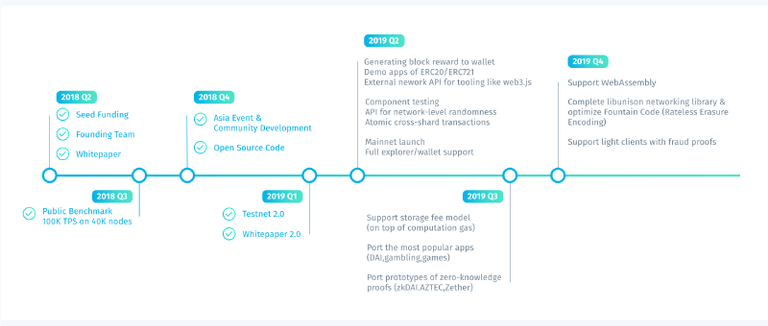
Harmony: the Revolution
Harmony is a fragmentation-based blockchain that has made several important advances for each challenge that currently presents itself.
Harmony Has a Decentralization to scale

One of its objectives is to offer scalability and decentralization. Its promise is to allow decentralized coordination at scale within the Blockchain,
In the same way that Google vertically integrates its search infrastructure, Harmony adopts a similar full-stack approach to resolve consensus at scale. The end-to-end integration allows you to iterate faster and make bolder optimizations than could be done with a common modular approach.
Harmony highlights problem solving by applying 10x innovations at the layer level instead of seeking 10% improvements. Some of the achievements of the Harmony protocol are described below:
● Secure fragmentation:
Harmony's fragmentation process is safe, thanks to its randomized distributed generation process, which makes it unpredictable, insensitive, verifiable and scalable. Harmony also shares the network without any interruption.
● Efficient and fast consensus:
Harmony is based on PoS and, which makes it different from other fragmentation-based blockchains that require PoW to select validators. So it makes it energy efficient.
● Adaptable PoS with threshold:
Harmony requires a game threshold for a node to join the network and adjust according to the total stakeout volume. This required threshold should be low enough that small punters can still participate in the network and earn rewards.
● Scalable network infrastructure:
Harmony can propagate blocks quickly with its RaptorQ source code. It achieves cross-fragment transactions that scale logarithmically with the number of fragments, this because it adopts Kademlia routing [37].
● Consistent cross-fragment transactions:
Harmony has fragments that communicate directly with each other, this because it supports cross-fragment transactions, it has an atomic blocking mechanism, which ensures the coherence of transactions between fragments.
Our Technology:
Consensus protocol:

The consensus protocol used has design principles such as fragmentation and channeling to parallelize transaction processing.
Systems:

Harmony develops a slender and specific kernel to execute our protocol with higher performance and CPU security. This will allow broad devices to participate in the consensus of a more decentralized network.
Nets:

Harmony Implements network engineering techniques allowing faster and more intelligent message propagation. Its compressed network topology allows us to execute a highly concurrent protocol.
Latest updates:
- Whitepaper publication showing technology, research and key guiding principles.
- Creation of the team of founding engineers who have extensive experience in large-scale infrastructure construction.
- Creation of private seeds, which allow to develop the central protocol and begin to involve our early community.
Pangea: A Massive Success
Pangea is an experimental area for a large number of people to interact with the Harmony network, test its limitations and its technology. Help them have a lot of fun while earning rewards.
The initiative had the following in its first 24 hours of operation:
- 138 nodes in operation
- 1283 subscriptions
- 77 countries
- 356 keys downloaded
Some of Pangea's goals:
One of the objectives is to test the next milestones and updates of the Harmony core protocol, with this, the approach to smart contracts and sharing, in a network of all external nodes.
Roadmap

Our Team

More Info
Hi, @ggcarlosr!
You just got a 0.01% upvote from SteemPlus!
To get higher upvotes, earn more SteemPlus Points (SPP). On your Steemit wallet, check your SPP balance and click on "How to earn SPP?" to find out all the ways to earn.
If you're not using SteemPlus yet, please check our last posts in here to see the many ways in which SteemPlus can improve your Steem experience on Steemit and Busy.